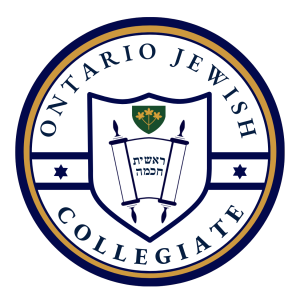 TORONTO — It used to be a hockey arena. Now it houses the latest functional magnetic resonance imaging (fMRI) technology.
TORONTO — It used to be a hockey arena. Now it houses the latest functional magnetic resonance imaging (fMRI) technology.
Honey and Barry Sherman, centre, who donated $5 million to the new Sherman Health Sciences Research Centre, are given York University hockey jerseys at the centre’s opening. Also pictured from York are, from left, Stan Shapson, vice-president of research and innovation; president Mamdouh Shoukri, and York University Foundation president Paul Marcus.
Last week, York University officially opened the Sherman Health Science Research Centre, a facility for research in brain and vision, biomechanics, virtual reality and robotics. Planning for the facility, which was completed in December 2009, started in 2007.
The $11.5-million centre, which was converted from an old hockey arena, was named after Honey Sherman, a York University Foundation board member, and her husband, Barry Sherman, president and CEO of the pharmaceutical company Apotex Inc., who donated $5 million to the project.
“Everybody who gives donations has to pick and choose as to where the need is greatest,” Barry Sherman said.
“It’s York University, an important Canadian university for teaching and research… we tend to concentrate our gifts towards health care. It’s good for the scientists, the public and the eventual patients who will benefit. It’s a gift to the City of Toronto.”
The centre, located on York’s Keele campus, is 50,000 square feet and accommodates 150 researchers and students. The facility includes a neuroimaging laboratory with an fMRI machine that’s being used for research in areas such as dyslexia, migraines, aging and movement disorders. It also houses a visual and cognitive development project that studies how vision develops in infants, as well as a perceptual neuroscience laboratory and virtual reality laboratory.
Sherman sees the facility’s potential for interdisciplinary research as an asset to the university.
“It’s very impressive, and it makes a lot of sense. [These fields] are interrelated. To make significant progress in any area you need people of various [fields],” he said, adding that he was particularly impressed with the neuroimaging lab.
“To try to understand the workings of the brain, you need that equipment,” he said. “It’ll be very useful in developing that understanding when it comes to brain impairment and issues like dementia.”
Stan Shapson, York’s vice- president of research and innovation, said the facility will provide an ideal work environment for both staff and graduate students.
“We didn’t have these kinds of facilities for them yet, so they were doing great work, but you’re doing work in a lab that’s in the basement of a building. There’s potential for interference when you’re collecting data. It slows down your work and you’re always adjusting equipment,” Shapson said.
“Now you have state-of-the-art labs… [The students and researchers] will be able to do better quality work more quickly.”
Some of this research includes studying loss of vision in the elderly, developing a robot-guided wheelchair and building robots that can function underwater.
Shapson hopes the facility will help the university forge connections with local hospitals.
“I think we had four presidents of regional hospitals at [the official opening]. That’s wonderful. They’re looking at this facility as something that could help them,” he said.
With the new facilities and York’s existing Centre for Vision Research, which is internationally renowned, Shapson sees the potential to attract new researchers and students, as well as to apply existing research to the health care sector.
“I think [this centre] is going to drive new ideas, innovations and treatments. At the end of the day, the hope is to deliver better health outcomes to Canadians,” he said.






